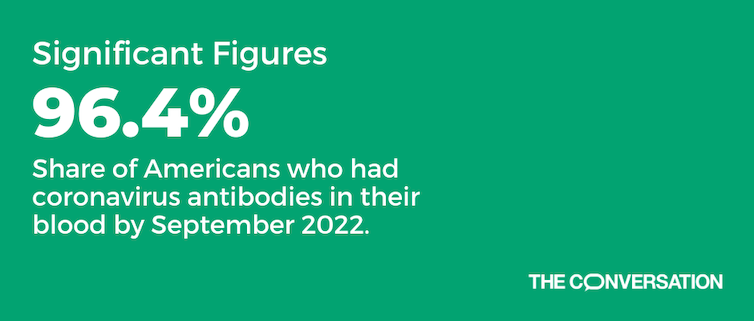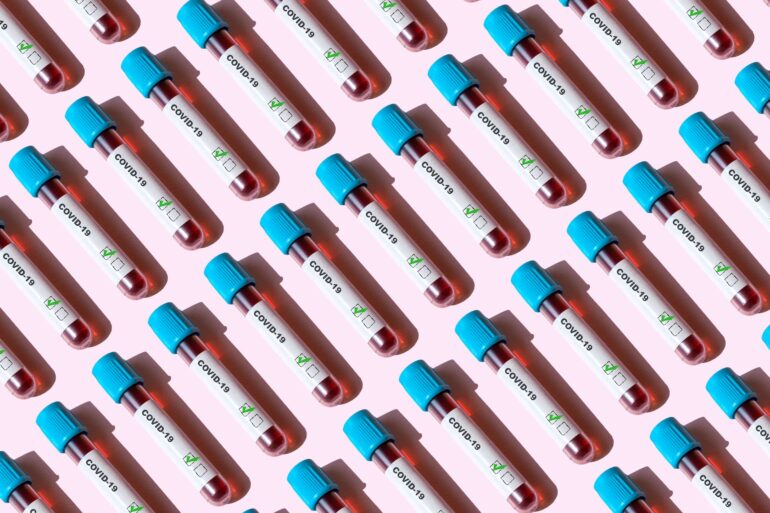
CC BY-ND
Antibodies to SARS-CoV-2, the virus that causes COVID-19, were present in the blood of 96.4% of Americans over the age of 16 by September 2022. That’s according to a serosurvey – an analysis testing for the presence of these immune defense molecules – conducted on samples from blood donors.
A serosurvey like this one helps researchers estimate how many people have been exposed to any part of the coronavirus, whether via vaccination or infection. Both can trigger the generation of antibodies to SARS-CoV-2. And by identifying which kind of antibodies someone has in their blood, researchers can break down the 96.4% into different types of immunity: infection-derived, vaccine-derived and hybrid.
COVID-19 vaccines used in the United States are based on only one part of the virus – the spike, or S, protein. Researchers can tell that a person has been vaccinated and has not been infected if their blood has only anti-S antibodies that target that spike protein. If someone has anti-N antibodies, which target the virus’s nucleocapsid protein, it’s a sign that they’ve been infected by SARS-CoV-2. To reliably identify someone with hybrid immunity, a researcher would need to match someone who has anti-N antibodies to an official vaccination database.
What about the 3.6% without antibodies?
Immunologists know that antibody levels decrease in the months after a COVID-19 infection or vaccination, and this is true for many pathogens. It’s possible some people did have antibodies at one point, but they’re no longer detectable. And not every infection leads to a detectable antibody response, particularly if the case was mild or asymptomatic.
Another factor is the accuracy of the antibody test. No test is perfect, so a small percentage of people who truly have antibodies might come up negative.
Together, these considerations mean that the 96.4% number is likely an underestimate. It seems reasonable to conclude that almost no one in this population has neither been infected by SARS-CoV-2 nor received a COVID-19 vaccine.
Here’s how antibodies help your body fight against an invader like the coronavirus.
A clearer picture of a virus’s spread
Serosurveys are useful for understanding how likely different types of people – of varying ages or races, for example – were to have been infected. For this purpose, a serosurvey can be much more reliable than using data on people who received a positive PCR test, or who report having had a positive rapid antigen test, because getting a positive test is heavily influenced by access to care, health care behavior and how severe your illness is. These are sources of what is called bias.
This bias has two effects: It leads to large underestimation of the proportion of the overall population infected, and it can lead to spurious differences between groups. For example,…



